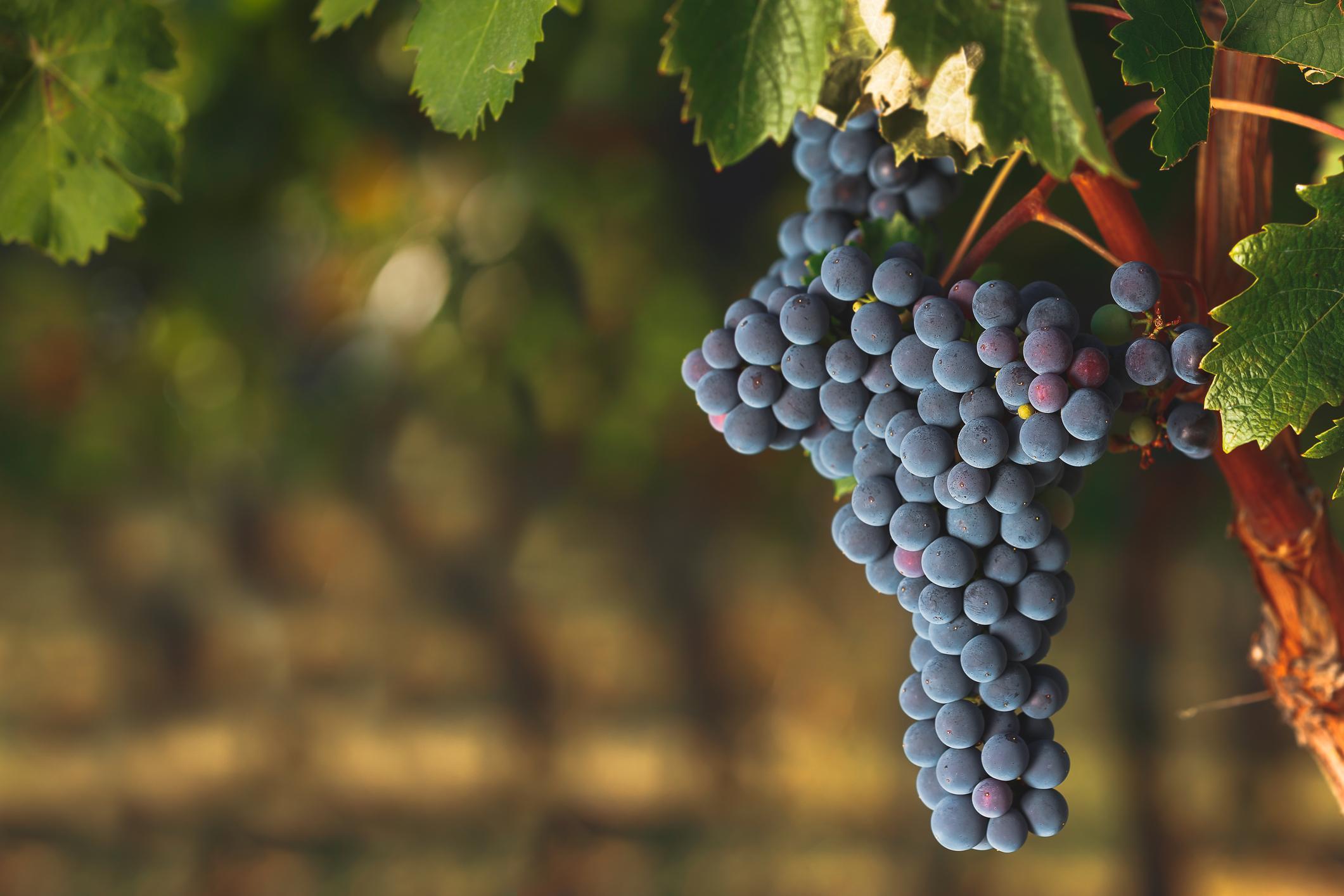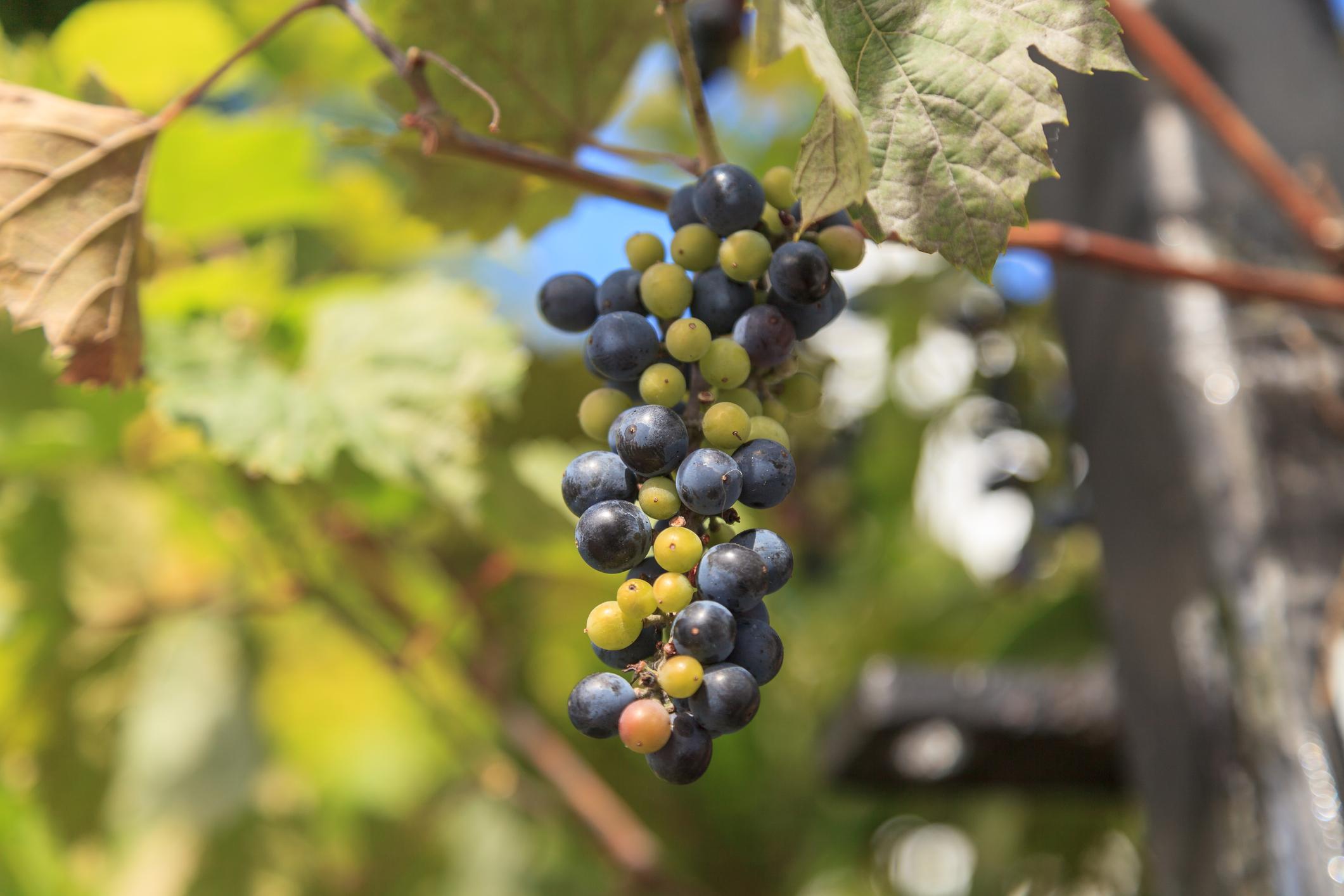Different Types of Grapes for Eating and Drinking


Different types of grapes have been cultivated since ancient times, going right back to the Bronze Age. Since this time, many more varietals of grape have been developed. One of the reasons for the great variety of grapes is the history of winemaking. Different types of grapes have been used to create various types of wines with a diverse range of flavor profiles. Some are very dry, others very sweet, some are light and some are full bodied. Not all grapes are used for wine. We can also enjoy eating them. The types of grape we buy at the grocer or supermarket can also be varied. What grapes are availabilty will depend largely on location and time of year.
At thedailyECO, we provide 18 different types of grapes for eating and drinking. We explain a little about the profiles of each one and photos of what they look like.
Common grape vine (Vitis vinifera)
This is the most common type of grape. It is from this basic grape species that thousands of grape varieties (known as varietals) have been developed. They are used for making wine, eating on their own or dried to create raisins and sultanas. Some characteristics of the common grape vine include:
- It is a climbing vine which can reach up to 30 meters in height. However, it is usually kept low by pruning to be able to harvest the fruits. To support itself, it develops tendrils from the stems.
- The leaves are large at about 12 centimeters in length. They are lobed in shape with serrated margins.
- The flowers are small and grow in inflorescences in clusters, from which the globose fruits that we know as grapes will be formed.
- It is essential that it be planted in a place where there are cold seasons in order to develop.

Sauvignon blanc
Among the most common varieties of V. vinifera is the Sauvignon blanc which is used to make a type of wine for drinking with the same name. It is also very common in dessert wines. The photos show these grapes are greenish-yellow in color. They ripen in early fall. They need to be grown outdoors and have full sun exposure. It is a variety native to the Bordeaux region in France.

Cabernet Sauvignon
This is a variety of V. vinifera that produces grapes that are small with a very deep and dark purple in color. The varietal is known for its abundant harvest which is why it is also a very common type of grape. The flavor of the grapes is intense, commonly used to make juice or red wines known as Bordeaux. It is a plant very resistant to pests and diseases, which can be grown in greenhouses or outdoors. The grapes ripen in late summer or early fall.

sultana
Another variety of V. vinifera is the sultana which is green in color when fresh. They are crisp, very sweet and seedless, making them excellent as table grapes and for making dried grapes. Their popularity as a dried grape has led to many types of raisin being known as sultanas. However, while this type of grape is commonly used to make raisins, many products called sultana may be from a different type of seedless grape.

Amur grape (Vitis amurensis)
This type of wild grape is native to East Asia, passing through Russia, Japan, China and Korea. It is the most cold-tolerant grape species, being a great productive alternative for areas up to -35 ºC/-31 ºF.
The leaves vary greatly among them, being able to be tri- or pentalobulated, oval or round. They measure between 10 and 25 cm and are serrated on the margins. Come fall, the green color of the leaves will turn to red and yellow tones. It is widely used in the wine and table grape industry. The fruits are black to purple in color, as shown in the photo. They vary in color, acidity level and sweetness.

Fox grape (Vitis labrusca)
The fox grape species produces dark red grapes, with the photo below showing an immature stage. They are also characterized by the fact their skin comes off easily when squeezed. They have a peculiar and strong aroma, which differentiates them from other grapes. It can be distinguished from other species because the leaves have white or brown hairs on the underside. There are various cultivars including Isabella, Concord, Delaware, Niagara and many hybrid grape species.
It is an American vine, native to Northeast America. The plant grows abundantly and is sometimes considered a pest. It is very resistant to diseases which is why it was used to overcome the Great French Wine Blight. This was a plague of pests known as phylloxerawhich attacked thousands of vines in the 19th century.

Muscadine grape (Vitis rotundifolia)
This is another of the American vines and is native to the southeastern United States. This is partly because it is adapted to humid and warm climates, not supporting temperatures below 12 ºC/53.6 ºF. They are also tolerant to diseases and pests, so it is used in areas where these issues are known to proliferate.
The color is very black, being one of the darkest types of grapes. They are used to make juices, wines or jams, but not as table grapes. They are not good for eating since the skin is hard and the pulp must be sucked out.

Frost grape (Vitis riparia)
Also known as the riverbank grape, this American vine is found in North America, all the way from Quebec to Texas. Withstands temperatures down to -45 ºC/-49 ºF. Since it is naturally protected against disease, it is used in hybrid programs to create new varieties that have the resistant characteristics of this species.
As you can see in the photo below, the fruits are dark and mature in the months of May or June. They are used as eating grapes, as well as for drinking in juices or wines. They have a slightly bitter and herbaceous flavor when eaten raw.

Other different types of grapes
Here are some other types of grape, all of which are varieties of the common grapevine (Vitis vinifera). They are most known for their use in drinking as they are all used to make wine. However, many are also good for eating:
- Pinot Noir
- Chardonnay
- Pinot Blanc
- Brant
- Merlot
- Malbec
- Shiraz
- Verdejo
- Yellow Muscat
- Tempranillo
Now you know about the different types of grapes, you may be interested in learning about some of the different types of mint and different types of rosemary plants.

If you want to read similar articles to Different Types of Grapes for Eating and Drinking, we recommend you visit our Plant care and cultivation category.
Royal Horticultural Society (nd) Vitis. Available at: https://www.rhs.org.uk/plants/search-results?form-mode=true&query=vitis














